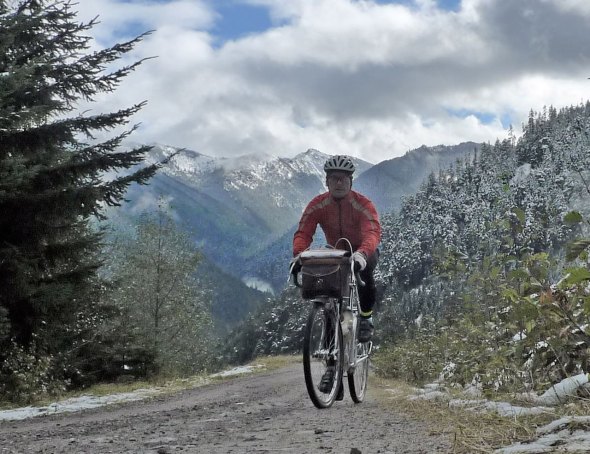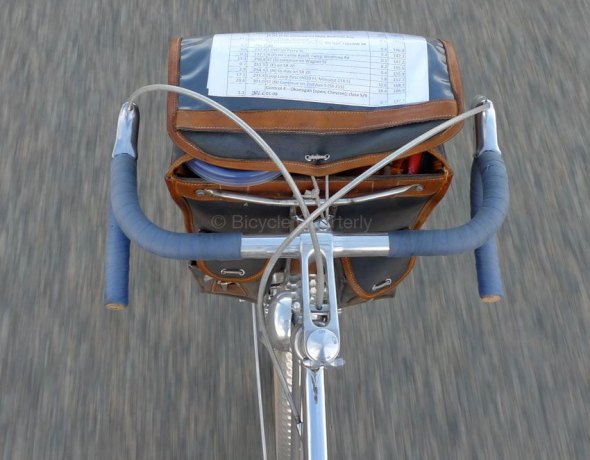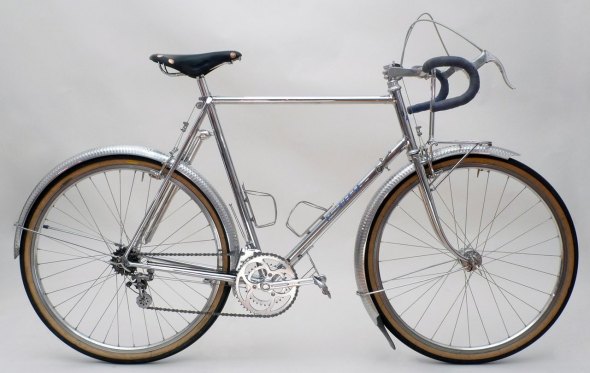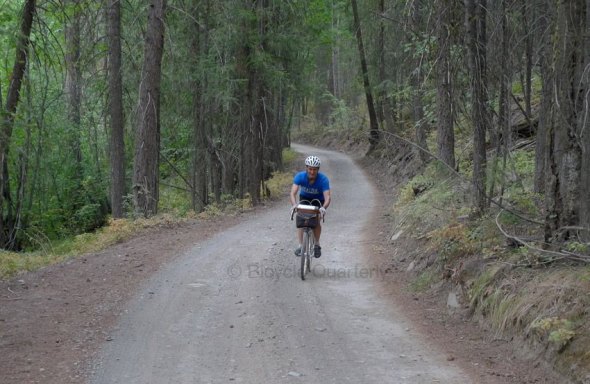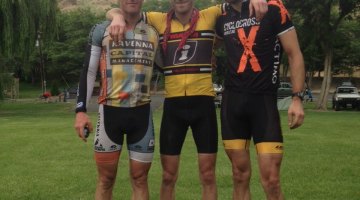We wanted to get a look at some of the bikes from the Oregon Outback 360-mile race, and one of the ones at the top of our list was second-place finisher Jan Heine’s Rene Herse randonneuring-specific bike. We also looked at Ira Ryan’s race-winning Breadwinner. Can’t get enough gravel? Check out our new Gravel Grinder section for more bikes and race coverage.
Jan Heine is the editor of Bicycle Quarterly magazine. He enjoys riding fast and far on scenic routes off the beaten path. He recently finished the Oregon Outback 363-mile gravel ride in just under 30 hours on his custom-made Rene Herse randonneur bike. The bike was designed for anything from the 750-mile Paris-Brest-Paris to exploring gravel roads in the Cascades. It incorporates a decade of research by Bicycle Quarterly (and their parent company, who also manufactured some of the Compass parts that went into the bike build) into what makes a bike fast and comfortable for these types of rides.
The frame is made from very thinwall tubing (7-4-7 non-oversize), in order to flex and stay “in sync with my pedal strokes,” Heine explains. The fork blades are made by Kaisei, and Heine adds, “Their thin profile provides a small, but significant, amount of suspension with no extra weight or complication.”
Key to the performance in gravel events are the tires, which combine supple sidewalls with a lot of air volume—”Very similar to high-end ’cross tires,” Heine explains, “But as clinchers and with a road-oriented tread pattern. As a result of these features, the bike is as fast as a good road bike—we’ve tested it against the stopwatch on various climbs—yet it can handle some pretty rough roads without slowing down.”
As for accessories, “The generator lights mean that I always have light. Even if I don’t plan to be out after dark, I’m not limited by having to be back at sunset, so I can explore more without watching the clock. The stem cap operates a light switch in the steerer tube that turns both lights on and off remotely.”
The handlebar bag allows convenient access to food and clothes, often without stopping, but it also doesn’t affect the handling of the bike like a saddle bag or a rack trunk would. The frame’s front-end geometry is designed for the front load.
“The derailleurs are a personal fancy,” Heine says. “The front one is operated by a lever, so it’s super-light and has no cables to break. The rear one is a super-smart design from the 1930s, with constant chain gap, constant chain tension and desmodromic actuation—one cable pulls to upshift, a second cable pulls to downshift. It has very light action and shifts very quickly, but any other derailleur would work as well. Really, I don’t shift all that often…”
For braking, Heine says, “I prefer the centerpull brakes over cantis for all but the muddiest courses, because the posts don’t flex as much, since they are close to the fork crown and seatstay bridge. So you get better modulation and more consistent brake power. Discs have their own issues, the main one that they require beefy fork blades, which would make the bike less comfortable on long rides.”
The handlebars with their long reach have multiple hand positions, which helps on long rides.
Rene Herse Bike:
- Frame/fork: Rene Herse 650B steel custom randonneur bike, built in 2011.
- Tires: Compass Babyshoe Pass Extralight 650B x 42mm
- Drivetrain: Rene Herse cranks 46/30 with 5-speed 14-22 freewheel. Custom-made lever-operated front derailleur, 1930s Nivex rear.
- Brakes: Mafac Raid centerpull (1970s)
- Lights: SON Delux generator hub, Edelux headlight, Compass Bicycles taillight
- Saddle: Brooks Professional
- Handlebars: Grand Bois Maes Parallel













